Fatal Fury (Theatrically released in 1994)
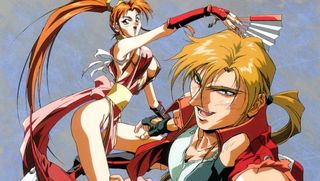
Back in the '90s, SNK's fighting games were battling against Capcom's for arcade dominance. So it makes sense that, once Street Fighter II got the theatrical anime treatment, rival series Fatal Fury would do the same. Both films have their strong points, but Fatal Fury is the clear winner in one category. SFII has some brief and regrettable fan service, but Fatal Fury spends almost as much time objectifying the women on the roster as it does in fights.
Most of the blame (credit?) should probably be given to director Masami Obari. Beyond great mech design, Obari's artistic trademark is expertly over-animating breast movements whenever the opportunity arises. He found a fitting muse in Fatal Fury's Mai Shiranui, never missing a chance to fill the screen with her heaving chest. The fight scenes in the film still hold up pretty well, but they would likely look even better had Obari given them as much attention as he gave Mai's shower scenes.
Battle Arena Toshinden (Released on VHS in 1996)
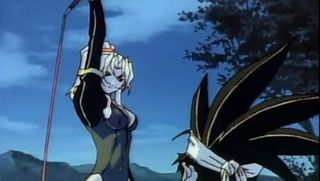
Fatal Fury still has a number of fans today, but Obari's next project is pretty much lost to history. Now known mostly as a footnote in PlayStation's early existence, Battle Arena Toshinden was once one of the hottest titles in gaming. After the early polygonal combat captivated players worldwide, an OVA seemed like the next logical step. Sadly, the series would be nearly dead by the time it came to America.
The direct-to-video film picked up right after the finale of the first game. Technically it told the story of male lead Eiji battling a shadowy organization and searching for his missing brother, but Obari is much more interested in animating femme fatale Sophia. As you can guess, her scenes were nearly as crude as the graphics in the now-ugly games.
Fire Emblem (Released on VHS in 1996)
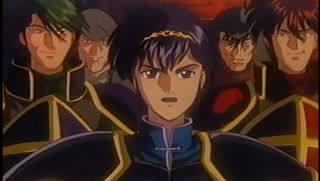
Before Smash Bros players embraced Marth and Roy, Fire Emblem was loved in Japan and virtually unknown in the US. Back when the series was still plugged into Super Famicoms all over the island nation, popular animation studio KSS chose to adapt the first game and its direct sequel into an OVA series. Only two episodes were made before it abruptly ended, but its still an intriguing intro to Marth and his friends.
Players of Fire Emblem: Shadow Dragon will recognize characters like Shiida and Ogma, but the show stops before viewers could see Marth and company battle anything tougher than a pack of bandits. Even with such an ignoble end, the series does have an interesting legacy. First, both episodes were briefly available in the US about four years before America was formally introduced to Fire Emblem via Smash. Furthermore, Marths Japanese voice actor reprises his role in Smash Bros., meaning Nintendo of Japan at least remembers this anime exists.
Panzer Dragoon (Released on VHS in 1996)

Not many Sega series got the anime treatment, and of the few that did, one of the strangest adaptations has to be Panzer Dragoon. The OVA somehow crams the entire story of the first Saturn game into less than 30 minutes of animation. Protagonist Kyle is quickly introduced, and in no time flat hes riding Blau, the blue dragon, as theyre both hunting down the black dragon that kidnapped Kyles lady friend.
What makes this adaptation so weird, outside of the incredibly truncated runtime? Much of the traditional animation is supplanted with incredibly dated 3D animation. The CG art might have impressed some at the time, but today it looks like something even a toddler could outdo on their parents' iPad. For as much as it offends the eyes, it still might be worth viewing it as a piece of pop culture archeology. Hopefully you can use it to gauge how little it took to impress the cavemen of the ancient era of 1996.
Pokemon Origins (Released in 2013)
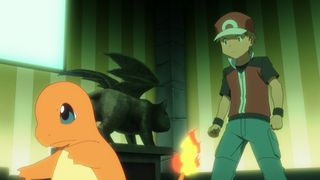
Are you a Pokemon purist that fondly remembers the anime from your youth, but now find the show way too cutesy and cliched? Do you wish the pocket monsters would regain the kind of edge you recall Red/Blue had before Pikachu dominated the series? And would you prefer to commit to just four episode instead of 500-plus? Then Pokemon Origins is the lesser known gem you've been looking for.
Released during the lead up to Pokemon X and Y, Origins takes things back to the original Red/Blue dynamic, sticking pretty closely to those games' plot. You watch Red and his Charizard working their way through gym leaders, filling out his Pokedex, battling his rival, and ultimately becoming champion. It's much more straight-laced than the main anime series, including more hard-hitting Pokemon battles and fewer Team Rocket shenanigans. Think of it as the Pokemon equivalent for Batman Begins, only with Squirtle in the place of Liam Neeson.
Mega Man: Once Upon a Star (Created in 1993)

Mega Mans first animated appearance was in the Saturday morning toon Captain N, and as infamous as that is, his anime premiere was even more unique. Spread over three episodes, the series is one part reenactment of Mega Man 5 and one part edutainment introduction to Japan. While Dr. Wily runs amok in Tokyo after somehow escaping a boys paused Famicom game, the Blue Bomber and his friends chase the mad scientist into the real world.
Despite a flashy opening that recreates boss battles from MM5, the majority of each well-intentioned-but-boring episode shows schoolchildren teaching Mega Man about Tokyos public transit, chopsticks, and Mt. Fuji. That's because the financing came as part of a education initiative. Every once in a while Mega will battle a robot master, but even that results in a weirdly instructive scene of Wily building huge androids based on Japans national landmarks. Ill give Once Upon a Star credit for having accurate character designs, but it exists for elementary school teachers in need of filling class time, not gamers.
Closing the vault
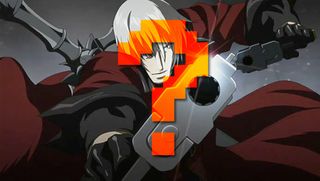
Surprised at the deep history of games and anime coming together? Ready to search out these toons on eBay and YouTube? Or do you know any other obscurities worth mentioning? Let us know in the comments!
And if you're looking for more anime fun, check out Studio Ghibli films reimagined as video games and our list of the best anime games.

